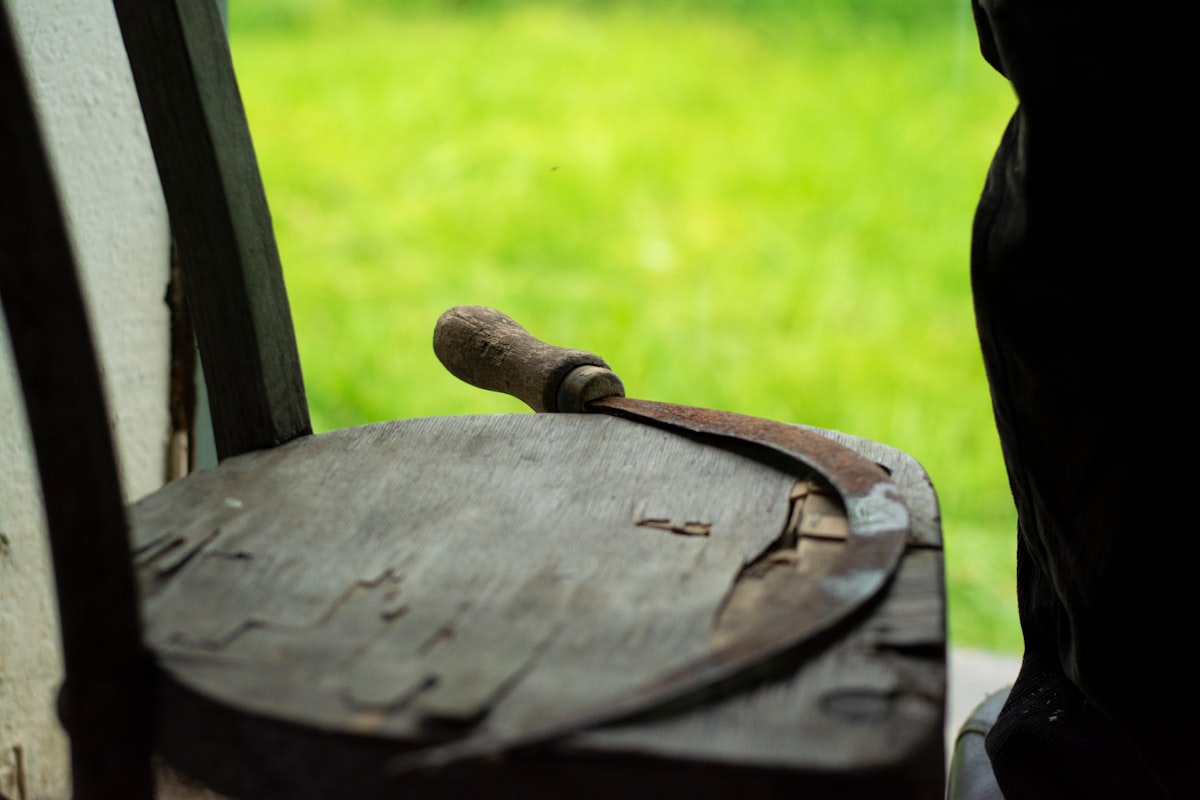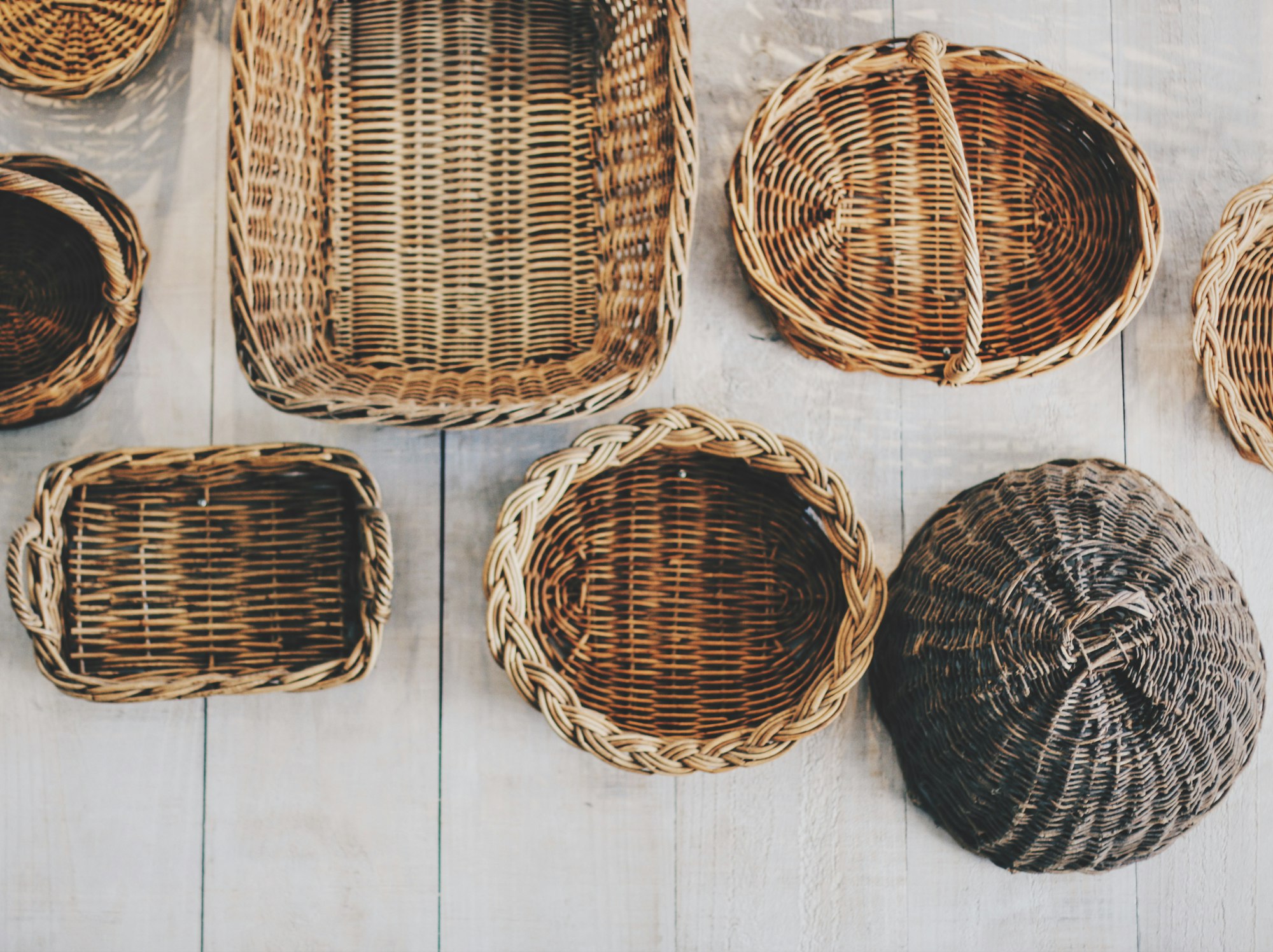X: Sickle
The long history of trying to justify sucky sickling.

Good morning. Today is décadi, the 10th of Messidor, Year CCXXXI. We celebrate la faucille, a tool for hacking and slashing and slicing.
Using a sickle sucks. It's still the most common tool in use for harvesting close-packed grains – anywhere a scythe is too large to swing around – and the shape is even what's still going on with the blades of modern harvesting machines. Humanity discovered that a curved blade that's sharp on one side is the best way to slice grass about a bajillion years ago (sickle artifacts seriously date back about 8,000 years) and it's been that way ever since. But being the best way to do something doesn't mean it's fun. Sickling is hard, annoying, boring, repetitive, frustrating work, which is why it comes up so often as the ultimate emblem of agricultural labor.
The month of Messidor literally translates as "harvest month" but everyone knew it really meant sickle time. While most of the other month names in the calendar are weather-based, this one hearkens back to an older medieval tradition of tracking the months by the labors.
This way of describing time was popular throughout Western Europe, but particularly in France, where Labors of the Month mosaics, tapestries, stained glass windows, sculptures, and paintings abound in many famous cathedrals. Notre Dame has them sculpted above the northern doors and on its massive rose window. They're also prominent in Chartres and Saint-Denis, meaning that French kings were always coronated beneath a depiction of the labors of the peasants who served them.
The labors varied by region – especially depending on how important winemaking was to the region, as there are some cycles that focus entirely on dealing with grapes – but the most famous ones follow this pattern:
Vendémiaire (September): grape harvesting
Brumaire (October): plowing and sowing
Frimaire (November): gathering nuts
Nivôse (December): baking and slaughtering
Pluviôse (January): feasting
Ventôse (February): chopping wood
Germinal (March): pruning trees
Floréal (April): planting and picking flowers
Prairial (May): making love (oh yeah, no kidding)
Messidor (June): hay harvest
Thermidor (July): wheat harvest
Fructidor (August): threshing
As you can see, this is the time of year when things start to suck after a relatively pleasant spring. It's the reason we traditionally don't have school in the United States, as even the kids would be thrown out in the field with a sickle to chop down all that grass.
The most well-known version of the Labors of the Month was created in the early 15th century, just a few decades before the invention of the printing press, by a team of artists under the employ of the Duke of Berry. Très Riches Heures du Duc de Berry was a bestseller by the standards of the time, being an illuminated manuscript that was also a calendar of religious feasts, an almanac of astronomical events, and prayers for every hour, thus its title, which translates as "The Duke of Berry's Richly Illustrated Book of Hours" to distinguish it from the dozens of other books of hours he had lying around!
Those rich illustrations were mainly the frontispieces of labors of the month. Here are those two harvesting summer months:


That's the duke's castle in the background during scythe month, and his summer chateau in the background of sickle month, just in case the laborers forgot who they were working for. The Duke was the third son of the king John II, the brother of Charles V, and served as regent king when his brother died and Charles VI was still a wee lad. So he was a big deal. While in power, he was known for excising heavy taxes in while the populace was still recovering from the Black Death. While he mellowed in his later years when this art book was commissioned, he was still a potent symbol of wealth inequality in feudal France, dying loaded up with outrageous debts to fund his lavish lifestyle; this book is so well-known because it was the only one not seized by creditors when he croaked.
The Labors of the Month showed up so often in prayers books and church walls because there was a real attempt in medieval France to tie the suckiness of farm work (for no pay) to religious practice. The implication was heavy that the work done in the field was for God (and, by extension, the king ... and, by further extension, the king's brothers and uncles and friends and mistresses and such), so grabbing a sickle in the summertime wasn't a punishment, but a key to the the kingdom of heaven. Laborers are usually depicted as happy and peaceful and well-groomed. Reality certainly fell short on all counts.
So it's an interesting tradition the French Republican calendar stepped into. It was also a work of propaganda, but this time with the religious justification stripped away and replaced with a more democratic "we're all in this together" vibe that would eventually evolve into 19th and 20th century communist movements and their depictions of the nobility of labor. Interestingly, our calendar only left two months being named after hard-ass work: Vendémiaire, which brings the reward of wine at the end, and this one, Messidor, because you just can't ignore that this time of year is hard work.
(You could argue Fructidor is a labor-based month, but it's placed when the fruit is ripe and falling off the trees, not in early spring as in the traditional Labors of the Month when the hard work of pruning and grafting were going on.)
So what we have is half a millennium's worth of justification to pick up the sickle: from the do-it-for-God books of medieval times to the do-it-for-country rallying cry of the revolution to the later do-it-to-screw-the-bourgeoisie-out-of-everything-they-own of communism. The reasons become more compelling and selfish over the years, but the sickle remains the same.
Today's card: 7 of hearts

The end result of this entire clownish endeavor is simply owning up to it, cutting it loose, and freeing ourselves up for more positive relationships already in our lives. No good was going to come of this, and we would have been trapped in a very small, very dull world. And it won't, somehow, have any effect on our work (witness the complete lack of spades in this reading). Thanks for going on this bizarrely specific journey about what to do if we sleep with our boss. A different reading begins tomorrow.



